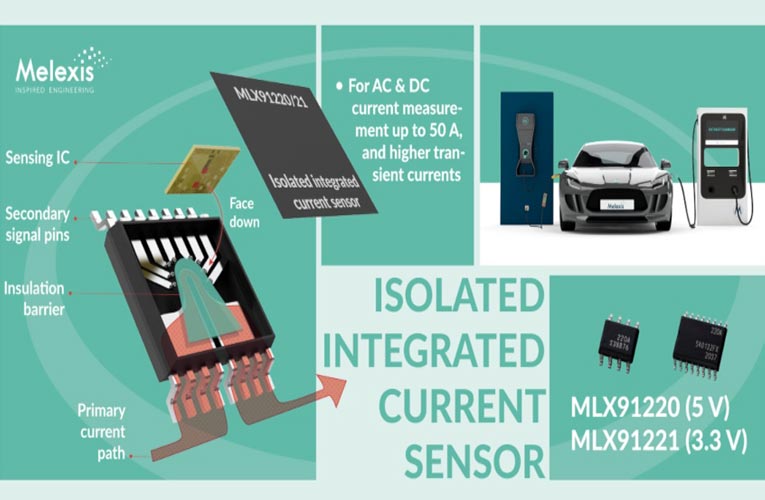
Melexis has announced the release of two new isolated integrated current sensors, MLX91220 (5 V) and MLX91221 (3.3 V), to increase performance and lower design complexities in various automotive and industrial applications. With 300 kHz bandwidth, these Hall-effect based current sensors can be used in different power conversion applications lower than 50 A RMS.
The new generation current sensors are built on the first generation of current sensors with integrated sensing elements and high accuracy signal conditioning with voltage isolation. These sensors are available in miniature SOIC8 narrow body package and SOIC16 wide-body packages and increased bandwidth of 300 kHz results in a response time of 2 µs, thereby supporting higher switching frequencies and more accurate tracking in control loops.
The MLX91220 improves the dual on-chip overcurrent detection (OCD) function enabling essential monitoring mechanisms using the internal and external features. The internal OCD threshold can be selected in or out-of-range, with a response time of 2 µs. The external OCD threshold can be set, through an external reference voltage, within or close to the output operating range, with a typical response time of 10 µs. Both when used in one application, can offer redundancy or detect separate conditions of short-circuiting and out-of-scope.
The MLX91220 and MLX91221 offer output mode flexibility defined at Melexis factory trimming. The new integrated current sensors use an internal differential sensing concept to detect the magnetic field that is generated by the integrated primary conductor. This provides a high level of stray field immunity, enabling higher density power electronics, as the sensor is less affected by stray magnetic fields in close proximity.
As per IEC/UL-62368, the SOIC8 package is rated to 2.4 kVrms isolation and the SOIC16 wide body package is rated to 4.8 kV rated isolation. Because of the higher pin count and increased conductor thickness, the SOIC16 package offers a lower primary conductor resistance. Both the variants have lower resistivity, while the SOIC16 measures 0.75 mOhm, the SOIC8 measures 0.85 mOhm, which is significantly lower than shunt-based solutions available. Samples and development kits are available from the company website and local representatives.

